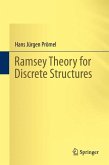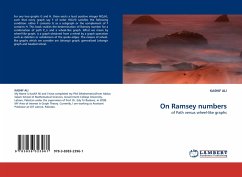High Quality Content by WIKIPEDIA articles! Ramsey theory, named after Frank P. Ramsey, is a branch of mathematics that studies the conditions under which order must appear. Problems in Ramsey theory typically ask a question of the form: "how many elements of some structure must there be to guarantee that a particular property will hold?" Suppose, for example, that we know that n pigeons have been housed in m pigeonholes. How big must n be before we can be sure that at least one pigeonhole houses at least two pigeons? The answer is the pigeonhole principle: if n m, then at least one pigeonhole will have at least two pigeons in it. Ramsey's theory generalizes this principle as explained below. A typical result in Ramsey theory starts with some mathematical structure that is then cut into pieces. How big must the original structure be in order to ensure that at least one of the pieces has a given interesting property?
Bitte wählen Sie Ihr Anliegen aus.
Rechnungen
Retourenschein anfordern
Bestellstatus
Storno








